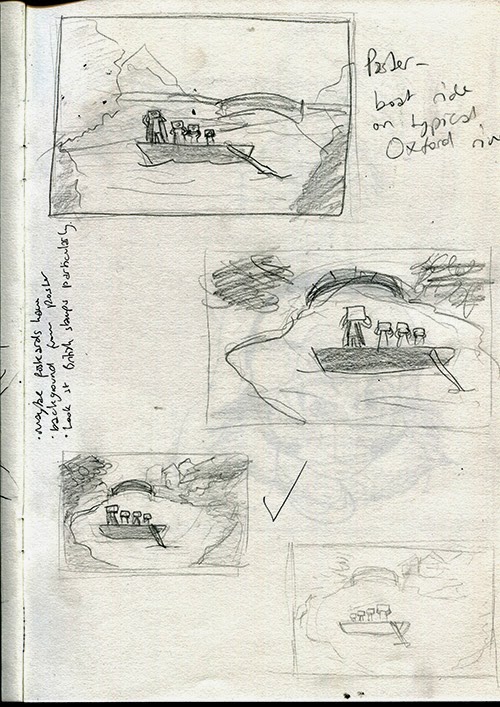1. What skills have you developed through this
brief and how effectively do you think you have applied them?
|
I think what I have taken the
most out of this module was the discipline of working to very specific
formats and through specific methods. This was most evident in studio brief 3
in which we had to produce three different sets and I feel that each of my
outcomes worked in their specific format quite well, although the small scale
of the stamps is still something that stumped me, with such small scales
definitely being harder to design for.
Although I already knew the
basics of Illustrator coming into this module, I have definitely developed my
skills in using it – being more efficient with my use of its tools and making
image through shape which I hope will influence some of my other work done
through other means.
In the group project I made a
club leaflet with Illustrator as well out of both line and shape. This was
more in vein with how I traditionally work, but the experience was good
nonetheless and the leaflet came out well.
|
2. What approaches to/methods
of image making have you developed and how have they informed your concept
development process?
|
In the cities postcard brief,
knowing that I would be using Illustrator, and that I wanted to make image
through shape, I found myself working in my sketchbook with sharpie markers
and making coloured shape blocks with them, so that I could get a better idea
of the process with which the final outcomes would be made and how I could
potentially construct them when it came to it.
I think with studio brief 3 I
also developed an ability to think about how I could re-appropriate imagery
I’ve already created for different formats – Each set shares something with
another – either the Alice character portraits, the backgrounds, or the
sketchy pencil texture. This re-appropriation of elements could be an
interesting skill to develop and good time-saver.
|
3. What strengths can you
identify in your work and how have/will you capitalise on these?
|
I think the variation of
approaches to my creation of work this module is a strength. I’ve developed a
lot of skills across a breadth of media this module, which makes me feel
confident that I could capitalize on these new skills in the future. I think
I used shape intelligently for the post cards brief. This has made me more
eager to incorporate it into my other work, which is a sentiment I felt by
the end of visual language as well. I think this is an area that I really
need to devote time into exploring and experimenting with in my image making
process.
|
4. What weaknesses can you
identify in your work and how will you address these in the future?
|
I think the weakest things I
have produced this module were the stamps for the final brief. I think a key
thing I need to work on is just try and be a bit more open-ended with what I
produce; perhaps I relied too much on my re-appropriation of other elements
because I didn’t want to spend more time developing separate images for the
stamps. Maybe I should have done a bit more research into interesting types
of stamps .
|
5. Identify five things that
you will do differently next time and what do you expect to gain from doing
these?
|
· Each project probably
could have used more research in order to better inform how each outcome was
composed – i.e. stamps
· When working in a
group project, put more consideration into the subject matter and how well we
can collectively respond to it in a group. This will speed things along much
more nicely and make decision making easier both individually and as a group.
· I will invest more
time in going back and improving things done early on in the module that
could use tweaking – The first post card I made of the Louvre is much weaker
than the rest. If I had left myself time at the end to fix it, the set would
be a lot nicer.
· I will not try and
create a traditionally drawn look digitally like I did with my SB3 poster.
Drawing all the little lines to create tone must’ve taken well over 8 hours
and was not fun. I only just realized how much easier and quicker it would’ve
been to draw it out in A4 and scan at a higher resolution as I have done for
COP more recently.
|
6.How would you grade
yourself on the following areas:
(please indicate using an
‘x’)
5= excellent, 4 = very good,
3 = good, 2 = average, 1 = poor
|
|||||
1
|
2
|
3
|
4
|
5
|
|
Attendance
|
x
|
||||
Punctuality
|
x
|
||||
Motivation
|
x
|
||||
Commitment
|
x
|
||||
Quantity of work produced
|
x
|
||||
Quality of work produced
|
x
|
||||
Contribution to the group
|
x
|
||||
































